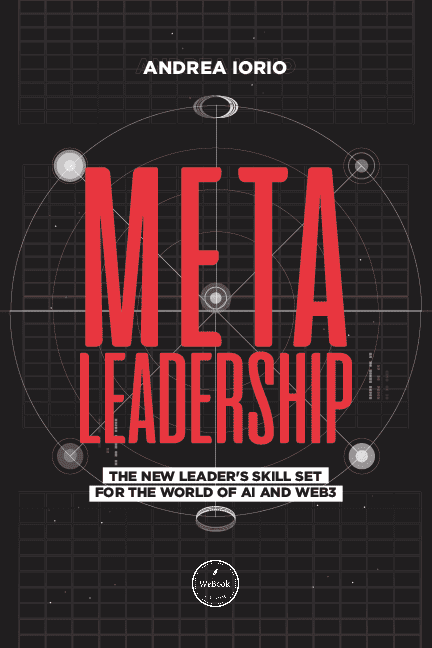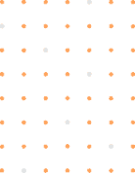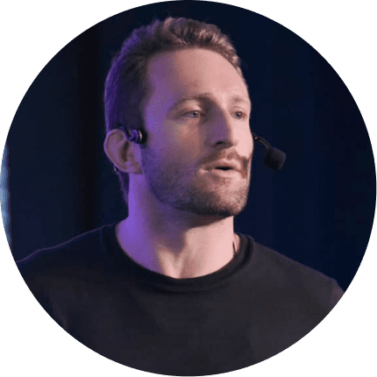Let's imagine that you are the manager of a sales team, and one day one of your biggest customers calls you in a rage because he claims to have been poorly attended by your best sales executive. “What do you mean, that guy is the best, how could this have happened?” you think with yourself. Soon after, you call the sales executive, and you're determined to face the situation head on. The executive justifies himself by saying that he took the liberty of trying a different pitch in order to justify a higher selling price for a new product, and tries to explain the situation. In face of the situation you have 3 alternatives:
1.He has to be punished because a mistake being made by such an experienced employee is unacceptable.
2.You decide not to punish him and instead encourages the collaborator to try again.
3.You sit down with the employee and ask him to clearly describe the elements that made him do such a rookie mistake, and ask him to share what he learned with the rest of the team.
You can already imagine that option 3 is the right one for me, because each mistake is an opportunity to learn, and that's what we're going to talk about in this article that analyzes a statement made by Amy Edmondson. Amy is a Professor of Leadership and Management at Harvard Business School, and the bestselling author of The Fearless Organization. In this next sentence, she tells us about a new error interpretation framework:
" One of the things, or maybe the most important thing I've ever learned is something you already know, which is that people don't like failure. They don't like to fail. And probably the most powerful answer, which is consistent and observable, is to hide it. Don't admit it. Hide it under the rug. But in my field of work, people in my field are constantly writing about this topic, and saying things like, "Fail a lot to be more successful soon." This is David Kelley, professor of engineering at Stanford and co-founder and CEO of probably the most famous innovation consultancy in the world, IDEO. And David Kelley will truly visit these amazing teams working on innovations and simply encourage them to fail. And clearly, words are important, aren't they? Fail a lot to be more successful soon, that's what he says. But what does he mean by that? He is giving us a theory that innovation cannot happen if we are not willing to fail."
I recently came across the chance to interview Israel Salmen, the co-founder and CEO of Meliuz, for my monthly column in the MIT Technology Review, and together with the editors, we choose to go with the theme of "Antifragility of the Brazilian entrepreneur". When I thought about who to interview, I had no doubts: it would be Israel, who turned Meliuz into a public company worth more than 4B reais, but who did so, not without a good dose of mistakes.
After all, he openly published his top mistakes in his latest book: Undertaking: The Art of Fucking Every Day and Not Giving Up: A Survival Manual for the Real World of Entrepreneurship. After all, when we undertake, innovate or lead, we are constantly stepping out of our comfort zone, and the big problem of being in an uncertain and unpredictable environment where we don't know how to behave, as in the case of an innovation project, is that we run the risk of failure. If when you do so, your company culture is to point the finger and punish the culprit, seeing the mistake as a great villain, will you move? Will you try it? Will you risk it? Most likely not.
But think of a child. By the way, think about the human body, and how it goes through several transformations and acquires a series of abilities, especially in the first years of life. Anyone who has a child, or anyone who has had the experience of following the development of a baby, is surprised by certain learnings that seem sudden, such as crawling. The interesting thing about “crawling” is that no one teaches this to children: babies learn to do it without anyone having to theoretically explain the technique of getting on all fours and alternating arm and leg movements to get around.
However, we can hasten to the conclusion that there is no need to teach the “skill” of crawling, and that it is a natural process, for which the baby's body is already inherently prepared. In fact, that would be a hasty conclusion to something that is not correct.
Yes, there are two fundamental factors for parents to stimulate this child development, and they do not follow the common known processes. You actually need to:
1 - Stimulate the baby's desire to move around.
2 - Create situations so that the baby can develop the muscles and motor coordination used in the act of crawling.
The first point is about designing the environment so that the child sees value in the idea of getting around: sometimes spreading toys close to baby, making the baby feel motivated to move.
The second point is about creating situations in which the child confronts its difficulties. In general, it is recommended to place the baby on his stomach, a position that is less comfortable and causes the child to try to use the muscles of the back, abdomen and limbs to turn over. This is called “tummy time” by pediatricians. It's literally a daily exercise in which the baby needs to lie on his stomach on the floor, to force himself to develop musculature, balance and other motor functions. We have already noticed the importance of the challenges for us to engage in the process of change, and this is explained at a scientific level as well.
So, how does it work? Stanford neuroscientist Andrew Huberman tells us how the mechanism of motivation works at a neurological level, that is, through dopamine, which is a neurotransmitter that acts as a key in the so-called "reward system". It's that feeling, that reward we feel when we win a great game, complete a great project at work or even when someone likes our photos on social media.
It plays an important role in our lives, makes us happy and keeps us motivated. But have you noticed how, shortly after reaching the goal, this positive feeling disappears and we are almost back to square one?
That's because, according to Andrew Huberman, most dopamine release doesn't come from achieving goals, but from the process of pursuing our goals, our challenges. It's what allows us to pursue them for long periods of time, even when the outcome is uncertain.
It is now clear that it is our responsibility, as leaders, to create a development environment for our teams where they feel motivated to pursue their goals, looking for a constant evolution and not a routine, static process, which again , makes us feel gears? It's obvious that we're going to get disengaged if we just repeat tasks without new challenges.
But there's a big problem here: in these types of environments, we don't know how to act the first time, and we often get it wrong. If children were like adults, who think that a mistake is a failure, they would most likely not learn how to crawl! If we don't change the way we interpret errors, we don't evolve.
And here's where Amy Edmonson's theory comes in handy: she says that not all mistakes are the same. In particular, she separates errors into three main categories:
Avoidable errors in predictable scenarios: these are actually bad errors, as they represent failures in well-known routine processes. They usually occur due to deviation, distraction or lack of qualification. It is usually easy to detect their causes and find solutions for these types of errors, for example, through checklists;
Avoidable mistakes in complex scenarios: Many mistakes are related to the unpredictability of some situations, in life and in business. In uncertain scenarios, the best path can be especially difficult to identify, and so we fail;
Smart mistakes in mixed scenarios between the known and the innovation: these mistakes can be considered beneficial, since they indicate the attempt to do something innovative and usually provide essential learnings for the growth of the company as a whole. Creating an innovative product and testing consumer reactions in new markets are examples of contexts that involve smart mistakes. These are experiments that must be carried out on a small scale to verify the results and feedbacks obtained, adjusting if they fail or scaling if they are successful.
What are the main features of smart errors, and how can we best design them?
I was recently in a live along with Pedro Englert, CEO of StartSe, and I foolish said something like “Mistakes are fundamental to evolve”. He justly replied, "Only if you learn from them, right?" It's true: first, for a bug to be intelligent, you need to get an informative result from it - either because it's designed to provide feedback, or because you're willing to reflect on it. We tend to see the same mistakes being made over and over again, as we don't analyze them. That doesn't make us any different from madmen, who, according to Einstein's definition, "are those who have done the same thing and expect different results."
Secondly, a smart bug has to be minimized in cost and scope, and kept relatively low. Digital Transformation takes a big part in this, since it allows us to design simulations of reality at lower costs, in addition to technologies such as 3D Printing, (which allow us to create prototypes at low cost). As Jim Collins famously said: "A mistake is only accurate if you survive it." Simple as that: we cannot risk going out of business because of our mistakes. These kind of expensive errors certainly cannot be defined as smart.
Finally, for a mistake to be seen as a smart one, it is necessary that the opportunities explored are significant, that the key hypotheses have been clearly articulated, and that the pilot test these hypotheses.
With this new perspective on mistakes, we've managed to transform the way we look at failure. In a traditional model, failure is simply not acceptable, and the belief is that good leaders, entrepreneurs and employees do not fail - with the leader's role, in particular, being to prevent and minimize failure. The consequence? Getting people to avoid and hide their failures out of fear and to protect themselves.
What we need is the exact opposite: a new framework for interpreting mistakes, in which mistakes begin to be accepted as the natural consequence of a process of experimentation and innovation, where good leaders, entrepreneurs and collaborators learn through mistakes and share the lessons with others - and with the leader's role, this time, to promote learning from mistakes. The consequence of this renewed model of interpretation of errors and failure is an admission of the uncertainty inherent in the experimentation process - and, let's face it, the uncertainty inherent in the world of digital transformation.
I'm going to leave you now with a practical challenge: choose a mistake you've made in recent times, professional or personal, and try to analyze it by answering the following questions:
•Why did I make this mistake?
•Did it fall into category 1, 2 or 3?
•Have I repeated this mistake again? If yes, why?
•If not, what have I learned from it?
•Has my life changed considerably after this mistake?
•Have I changed considerably after this error? For good, or for bad?
•Looking back, was making that mistake GOOD or BAD for me?
•Would I redo this error?
•If you hadn't made this mistake, what would have happened? Would it be better or worse than today?
Reflect on this as homework, and DM me later with your own reflections.
Keywords Soft Skills: Amy Edmondson, Leadership, What are Soft Skills in Business, Example of Technical Skill, Technical Skill Examples, Soft Skill Development, Soft Skills for a Job, Business Soft Skills, Soft and Hard Skills, Why Are Soft Skills Important, Necessary Soft Skills, Necessary Soft Skills, Human Skills, Entrepreneurship, MIT, Technology Review, David Kelley, Andrea Iorio









